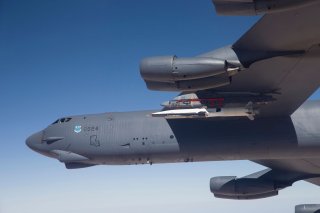Why Hypersonic Missiles and Hypersonic Defenses Are a Top Priority for the Military
A race to get ahead.
WASHINGTON – Hypersonic weapons have grabbed the attention of the defense industry, with Pentagon Under Secretary of Defense for Research and Engineering Michael Griffin calling hypersonic capabilities “the highest technical priority.” Defense News reports. Continue reading original article
The Military & Aerospace Electronics take:
16 Jan. 2020 -- With Russia recently announcing its Avangard hypersonic glide vehicle operational, we understand the challenge as the U.S. races to field these advanced hypersonic missile systems. Russia claims Avangard can travel at 27 times the speed of sound and strike “like a fireball,” while China contends its Starry Sky-2 hypersonic glide vehicle can evade existing U.S. missile defense systems.
And it’s not just Russia and China. Technology can proliferate. In the past, other countries have demonstrated their ability to acquire technology and reverse engineer it. Hypersonic weapons are one of the most prolific emerging threats, and the United States must remain ahead of the game in advanced hypersonic weapons development.
During my time at the Defense Advanced Research Projects Agency and most recently at Raytheon, I witnessed some of the great things that can happen when government and industry partner to develop advanced weapons for the good of our country — and we’re doing it again with hypersonics. U.S. lawmakers last year passed a law requiring that hypersonic weapons be operational by 2020; the Department of Defense’s proposed budget through fiscal 2024 calls for upward of $10.5 billion in hypersonic weapons development. Industry leaders are joining forces to tackle the technological challenges involved with hypersonic flight head on.
This article by John Keller originally appeared on Military & Aerospace Electronics in 2019.
Image: Reuters.

